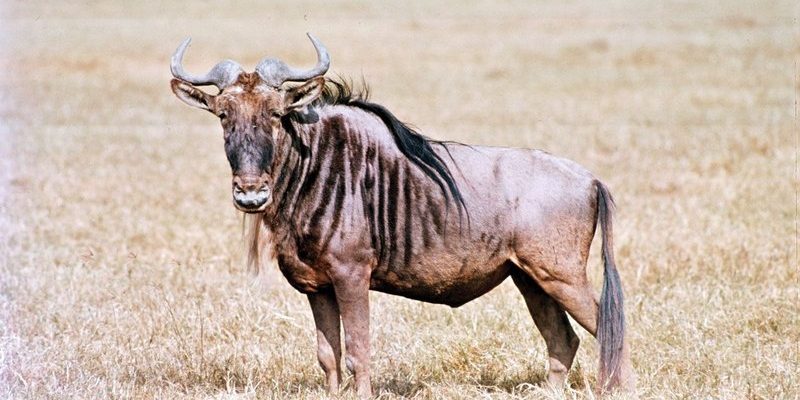
Understanding gnu habitats isn’t just about knowing where they are; it’s about appreciating the intricate ecosystems they inhabit. Think of them as the stars of an African wildlife documentary, each one playing a role in the circle of life. From grasslands to wetlands, gnu habitats are dynamic, which means their distribution reflects a lot about the environment they thrive in. So, grab a cup of coffee, and let’s explore the world of gnu habitats!
The Home of Gnus: African Savannas
Gnus primarily call the African savannas home. These wide-open spaces are perfect for grazing, and the grasses provide the key nutrients that gnu need. You might picture savannas like natural buffets, where gnu can feast on grasses and small shrubs, staying healthy and strong.
Savannas are characterized by their combination of trees and open grasslands. This unique balance offers gnu both food and shelter. While savanna grasses are essential for their diet, the trees provide shade, which is crucial during the hot African afternoons. The availability of water sources, such as rivers and lakes, is also important, as gnu need to hydrate regularly. Without water, they wouldn’t thrive.
Interestingly, gnu herds are often spotted in areas where grass is dense and plentiful. They have an innate ability to sense where the best grazing land is available. As they migrate for food, they also keep the grasslands healthy by grazing selectively, which promotes new growth. This natural process keeps the ecosystem balanced.
Migrations: The Great Wildebeest Migration
One of the most awe-inspiring aspects of gnu life is their annual migration—often referred to as the Great Migration. Every year, millions of gnu travel hundreds of miles across the Serengeti in Tanzania to the Maasai Mara in Kenya in search of fresh grazing grounds and water. Imagine a massive river of wildlife flowing across the landscape, with gnu leading the charge!
The migration typically happens during the rainy season. As the rains fall, the grass grows lush and vibrant, attracting gnu in droves. When the grass starts to thin out, they begin their journey again—almost like a natural rhythm. This not only ensures that they have enough food but also allows them to evade predators, which tend to follow the herds.
During this migration, gnu face various challenges, including rivers filled with crocodiles and vast plains where they are exposed to predators. But it’s this journey that symbolizes their strength and resilience. The migration isn’t just a survival tactic; it’s also a critical event for the greater ecosystem, supporting numerous species that rely on the same habitat.
Wetlands and Other Gnu Habitats
While the savanna is the mainstay for gnu, they also thrive in adjacent habitats, particularly wetlands. Wetlands provide a different kind of nourishment. Think of them as a mixed salad bar for gnu, offering a variety of grasses, reeds, and aquatic plants.
These lush areas often become crucial during the dry season when food is scarce. Gnus will venture into wetlands to graze on the greener vegetation available there. It’s fascinating how adaptable these animals are, shifting their locations based on the seasons and availability of resources. They’re like nature’s nomads, always on the move!
Wetlands are also vital for the broader ecosystem. They serve as a refuge for many species, providing breeding grounds for birds and essential habitats for other animals. This interconnectedness highlights how gnu and their environments support one another, which is a central theme in nature.
How Human Activity Affects Gnu Habitats
The habitats of gnu are increasingly impacted by human activities. As urban areas expand, agricultural practices change, and land is developed for farming, gnu habitats are shrinking. Imagine a beautiful expanse of grasslands being replaced by homes or fields—it’s a troubling reality.
This encroachment often leads to habitat fragmentation. When their natural spaces are divided, gnu can struggle to find food and migrate effectively. It can also increase competition with livestock, putting further pressure on their populations.
Conservation efforts are critical in addressing these challenges. By protecting existing habitats and creating wildlife corridors, we can help ensure that gnu can continue their migrations and thrive in their natural environments. It’s not just about saving gnu; it’s about preserving the rich biodiversity that these magnificent creatures represent.
Gnus and Their Social Structure
Gnus are incredibly social animals, often found in large herds that can number in the thousands. This social structure plays a significant role in their survival. Imagine a bustling city where everyone knows their place; that’s how gnu herds operate. They rely on each other for protection, especially against predators.
Within herds, gnu form strong bonds. Adult females usually lead, guiding their young and keeping the group together. They communicate through various vocalizations and body language, alerting each other to potential threats. This teamwork makes them formidable against predators like lions and hyenas.
Calves are born into this vibrant community, and learning the ropes happens quickly. Young gnus shadow their mothers, picking up essential survival skills like grazing and recognizing dangers. This nurturing dynamic highlights the importance of social ties in their habitats.
In summary, understanding where gnu live and the habitats they thrive in helps us appreciate these remarkable creatures and the ecosystems they support. From the vast savannas to lush wetlands, gnu play a vital role in maintaining the health of their environments. However, it’s crucial that we recognize the impact of human activities on their habitats and work towards conservation initiatives.
The next time you hear about gnu or catch a glimpse of a wildlife documentary, remember that these animals are more than just fascinating creatures; they embody the intricate dance of life that exists in nature. By protecting their habitats, we ensure that future generations can continue to witness the beauty and majesty of the gnu. Let’s cherish and protect the world they call home!

